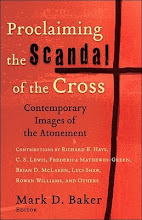
Then the high priest questioned Jesus about his disciples and about his teaching. Jesus answered, “I have spoken openly to the world; I have always taught in synagogues and in the temple, where all the Jews come together. I have said nothing in secret. Why do you ask me? Ask those who heard what I said to them; they know what I said.” When he had said this, one of the police standing nearby struck Jesus on the face . . .
Then Pilate took Jesus and had him flogged. And the soldiers wove a crown of thorns and put it on his head, and they dressed him in a purple robe. They kept coming up to him, saying, “Hail, King of the Jews!” and striking him on the face.
Then he handed him over to them to be crucified. So they took Jesus; and carrying the cross by himself, he went out to what is called The Place of the Skull, which in Hebrew is called Golgotha. There they crucified him, and with him two others, one on either side, with Jesus between them. (John 18:19-22, 19:1-2, 16-18)
There are many stories that deal with horror. But horror is not really a literary genre—it is a response to something horrific, an emotion that reflects the terror being encountered, whether in depiction or in experience.
It’s easy to revisit the story of Jesus’ arrest, abuse, suffering, and death abstractly, even theologically. But it’s a horror story of the first degree, a story of torture, humiliation, and a slow, painful death. While all the gospel accounts are relatively brief on this part of the narrative, they don’t skip it. Maybe this sort of thing happened often enough in first century Palestine that the story didn’t need an overabundance of detail. Nevertheless, they speak of it. And it’s a horror show.
Imagine this happening to someone you know, someone you care deeply about who is in your life right now—a friend, a brother, a son, a father, a husband. Imagine him being arrested on a false charge, cruelly beaten by soldiers and they nailed up on a cross of wood to die in the public square. And there is absolutely nothing you can do about it. There is no authority to stop the horror. The authorities are the authors of it all.
Jesus allows himself to be taken to this end. In his willingness to die, the power of evil ramps up to a fever pitch and has its way with him. If what we believe about Jesus is true—that he is the Word made flesh, that the fullness of God dwells in him—then that rabid force of evil has its way with God on that bleak Friday afternoon.
The most disturbing part of this horror story is that it didn’t come about by monsters or serial killers or phantoms. It came about in a way that was familiar to the people. The Romans were good at this sort of thing, and they plied their trade on Jesus with a well-rehearsed skill. It had happened before and it would happen again. But it was still an experience of horror for everyone.
It is an odd thing that our story of salvation could be classified as a horror story. But if it doesn’t invoke an emotion of horror at some point, then perhaps we have insulated ourselves against its gritty reality. Our story is not one divorced from the terrors of human history, but one that is grounded in a specific time and place, yet for all people in all times and places. And that one place, like all places, is a place where horror dwells.
It’s no wonder that the lights go out on Good Friday. Horror loves the dark.























No comments:
Post a Comment